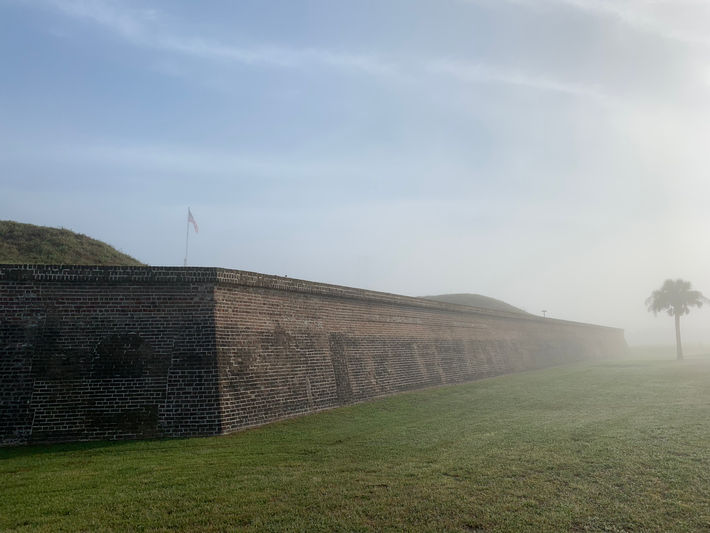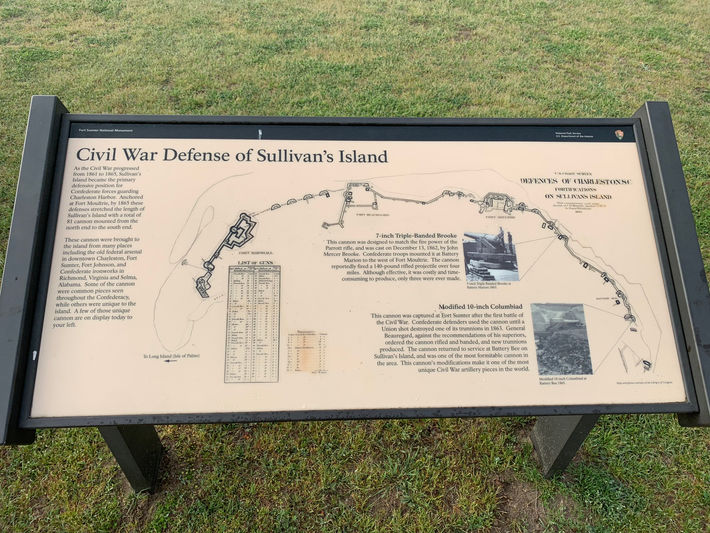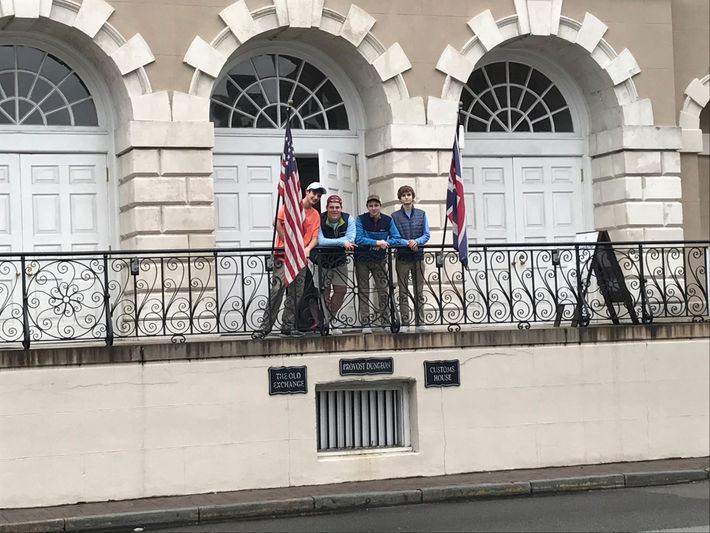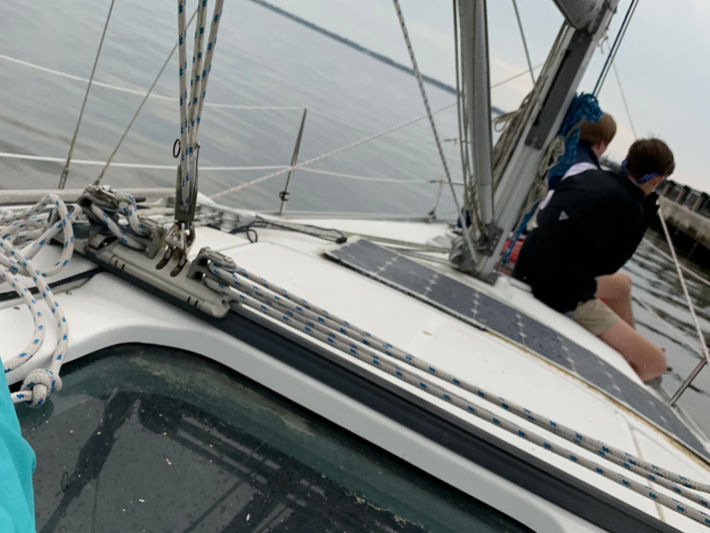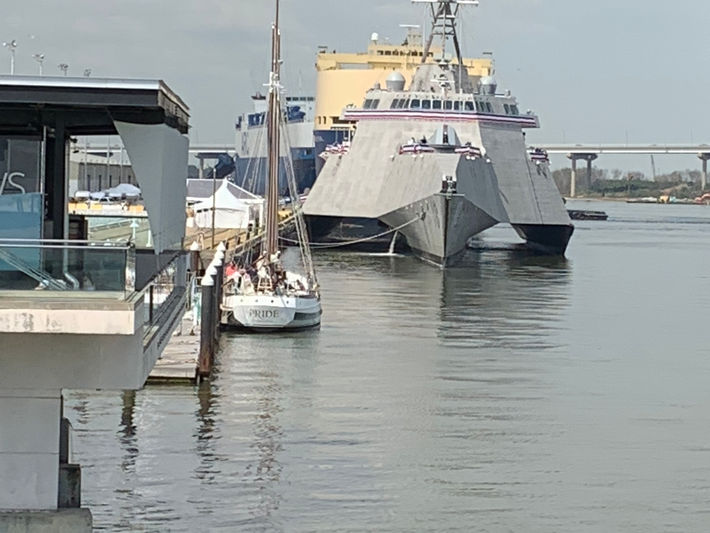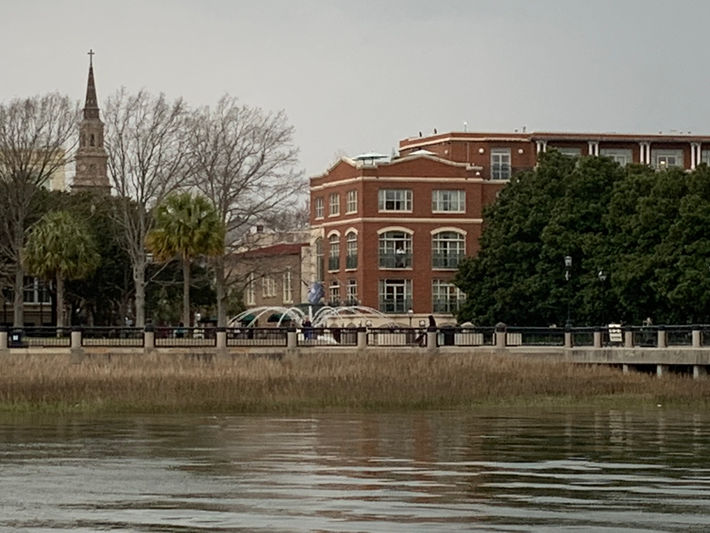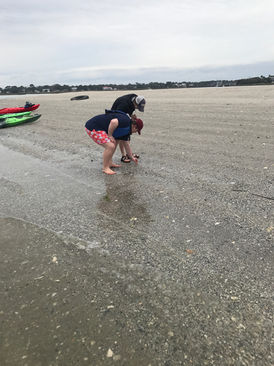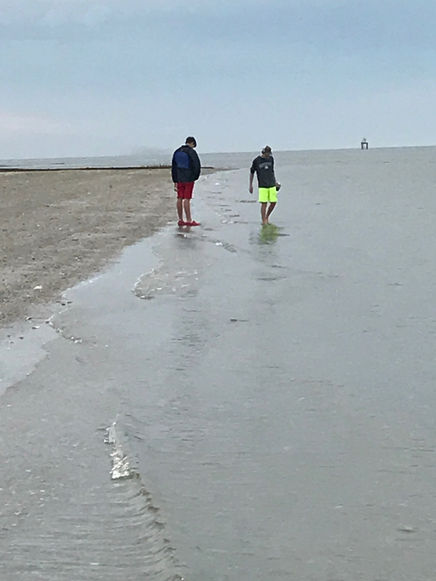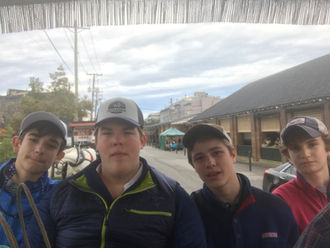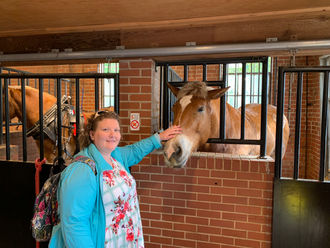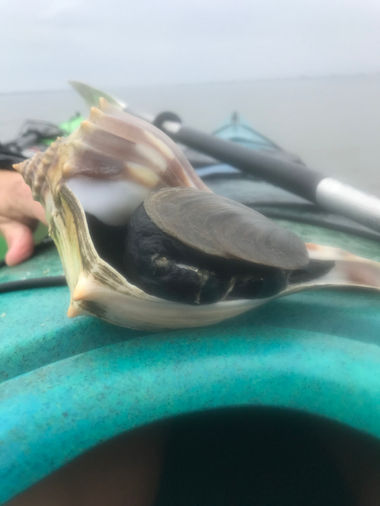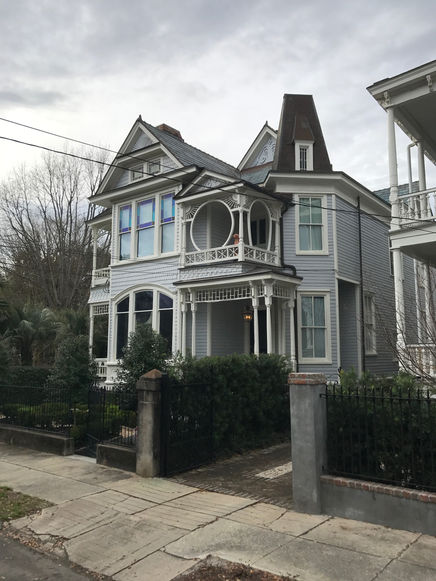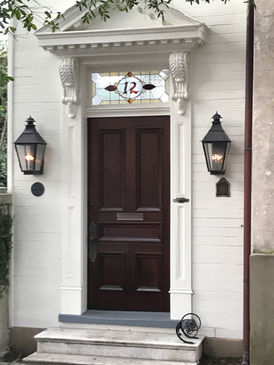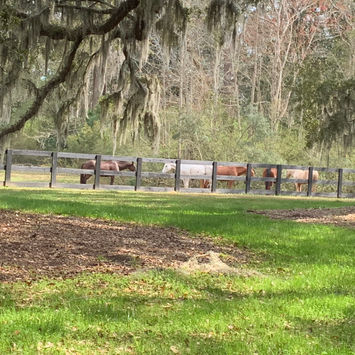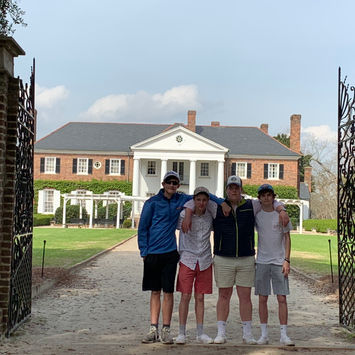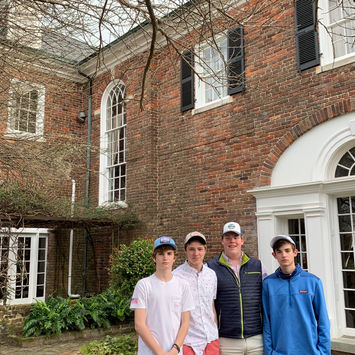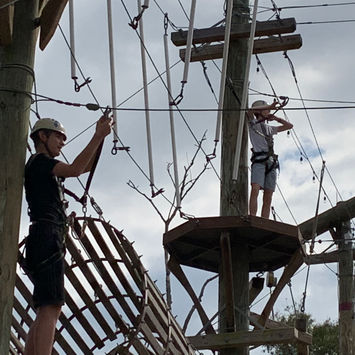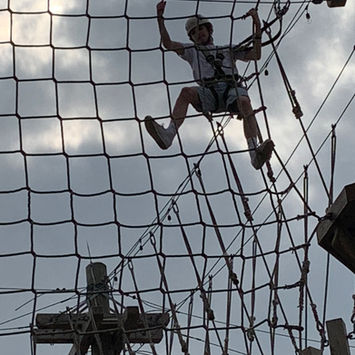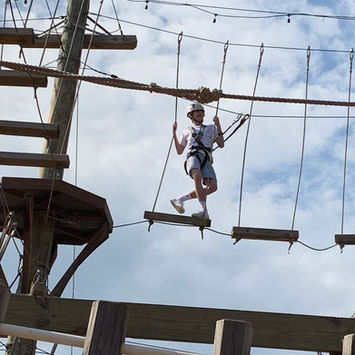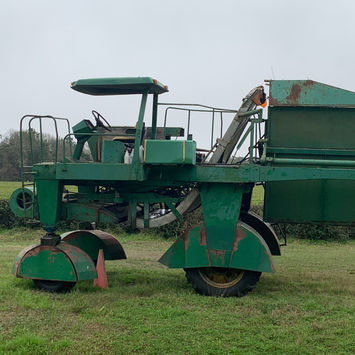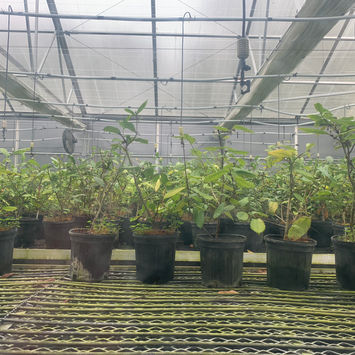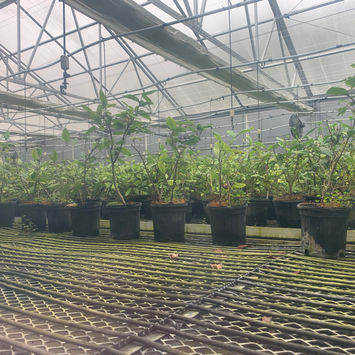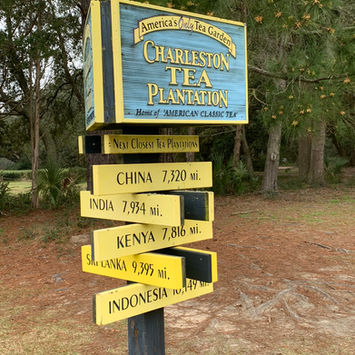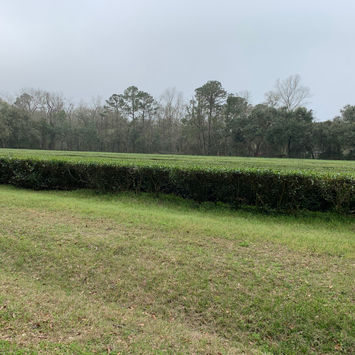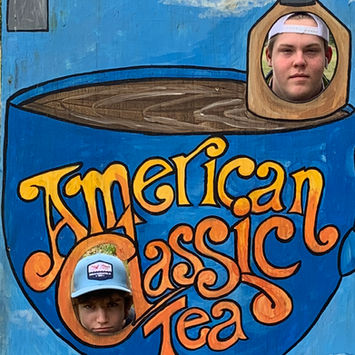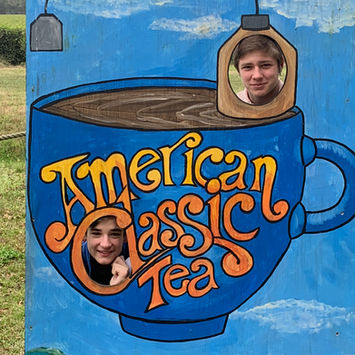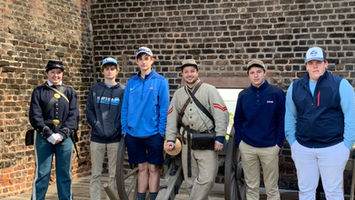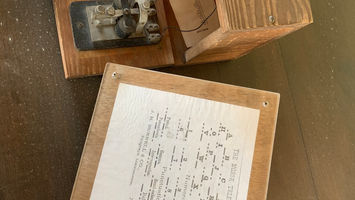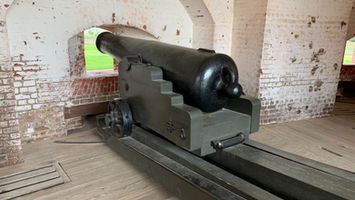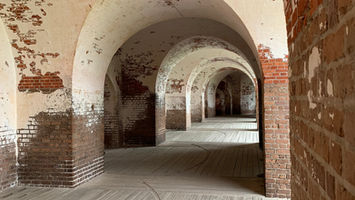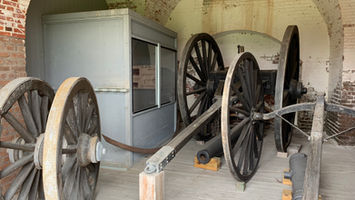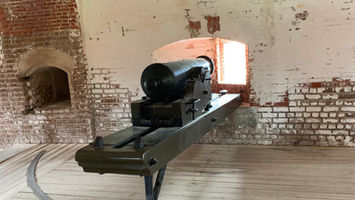
Charleston and Savannah
A tail of two Civil War cities
The primary focus of the trip will be examining the relationship between Charleston and Savannah, and their roles during the Civil War. Students will learn about the response to changing social, economic, and political conditions that lead to the start of the Civil War. We will travel to a number of different sites within these cities and immerse ourselves in Civil War history and southern culture. The itinerary will include visits to famous historical sites, and allow for the discovery of cultural and culinary experiences.

We will Journey from Charleston to Savannah and learn about Southern culture at plantations, Civil War forts, Lowcountry landmarks and landscaped gardens. We will hear tales of centuries past and experience elegant architecture and culinary delights in these waterfront cities where cobblestone streets and historic homes spill over with history and charm.
Known as the ‘Cradle of Secession’, Charleston was the epicenter of the break-up of the Union. With the secession convention of 1860, South Carolina became the first state to remove itself from the union of united states. Exerting its self-proclaimed state’s right to withdraw from a government it deemed tyrannical and overbearing, the new southern republic proclaimed its independence and its right to maintain that property it most coveted: slaves.
For Savannah, the Civil War began in January of 1860, with the seizing of Fort Pulaski by Georgian troops. It preceded the attack on Fort Sumter in Charleston, often-recognized official start of the war, by three months. Students will learn about Savannah’s role in the Civil War, the military strategies of the north and the south and how the locals dealt with the many hardships during this time of tribulation in the south. Will seethe houses of the South’s most famous generals and marvel at the architecture that was present during the Civil War era.
As part of their trip and as a catalyst for creation of an end-product, students will be asked
to keep both a written and photo journal of the different historical and cultural sites/places of
significance that we visit.
The overall goal of the Winterim is for students to gain an in-depth understanding of how and
why the Civil War started.

Itinerary
Monday February 25th @ 9:00 -11:45 am Meet in Williams 103
Review Syllabus and Trip Itinerary
Review Expectations
Decide on Final Project as a group
Discuss Daily Blog
Review Packing List
Lunch @11:45-12:45
Civil War: 1861-1865 Lesson
Tuesday February 26th @9:00 am - 12:00
Watch Glory & Answer Movie Guide
Lunch @12:00-12:45
Research locations we are going to visit
Review meeting time and location for Wednesday morning
Allow time for packing if time allows at the end of class
Wednesday February 27th Meet in Student Center Lot @4:15am
Flight #7:33 am BLD - 12:16 pm CHS one stop at CLT
Breakfast @ airport we will give your cash
Arrive in Charlotte @ 9:56 am
Flight to Charleston @11:20 am
Arrive in Charleston @ 12:16 pm
collect bags and go to pick up minivan.
Lunch @ Brown Dog Deli in Charleston
Check into Harbour View Inn if we have time
3:30 head to Tour Old Exchange - Road to Civil War 4-5pm
Check into Hotel Harbor View Inn setting in until dinner
Dinner @ Toast Charleston 7:15 pm
“Chilling Charleston Macabre Ghost Walking Tour” 9pm - 10:30pm
Back to hotel lights out at 11pm
Thursday February 28th
8:00 am Breakfast @ hotel
9:00 am leave for Fort Moultrie self-guided tour
10:00 am leave for Fort Sumter-Liberty Square Tour & Carriage Ride 10:45 am -1:15 pm
1:30 pm Lunch @ Rodney Scott’s BBQ
Go to fishing pier to grab bait for night time fishing
After lunch back to hotel to change for evening
4:00-6:00 pm Sunset Sail of Charleston Harbour with Captain Paul Mitchell
6:30 Dinner @ Burger Gun Burger shop
8:00pm - 10:00 pm Fish off of fishing pier
11:00 pm lights out
Friday March 1st
8:30 am Breakfast @ hotel
10:00am - 12:00pm Historic Kayaking Tour
12:30 Lunch @ Sullivans Island Restaurant
2:00-5:00 pm Boone Hall Plantation
Refresh @ hotel
7:30 pm dinner reservation at Fish House
Lights out 10 pm
Saturday March 2nd
8:00 am Breakfast @ Callie’s Hot Lil Biscuit
9:40 am - 12:00 pm Wild Blue Ropes Course
12:30 Lunch @ Yous Guys
Afternoon
Explore John’s Island & James Island Free
Charleston City Market Free
6:30pmDinner @ T-Bonz Bar & Grill walk to Escape in 60
8:30pm Escape in 60 - Escape Room
9:30 pm Ice Cream near hotel
11:00 pm lights out
Sunday March 3rd
9:30 am Breakfast @ Hominy
Check out Hotel by 11:00am
Explore Tybee Island on the way to Savannah
Lunch @ Crab Shack on Tybee Island
3:00 pm Check into River Side Inn in Savannah
7:00 pm Dinner @ Huey’s on the River
9:00 pm - 10:30 pm Grave Tales Tour
11:00 pm lights out
Monday March 4th
8:30 am Breakfast @ Cafe M.
10:00 am -11:00 amOld Fort Jackson Civil War Tour
11:30 am Lunch on Tybee Island
1:40 pm - 3:00 pm Marsh Loop on airboat
4:00 pm -6:00 pm Civil War Walking Tour
Refresh @ hotel
7:45 pm dinner reservation @ Cotton & Rye
Tuesday March 5th
7:30 am Breakfast @
9:00 am - 12:00 pmSavannah’s Historical Bike Tour & Rental
11:00 am Lunch @ Leopold’s
Explore Isle of Hope (before or after Shark Tooth Tour)
1:00 pm- 4:00 pmShark Tooth Island
6:00 pm Dinner @ Sandfly BBQ
Fishing
Wednesday March 6th
9:30 am Breakfast @
11:00 am - 1:00 pm Explore City Market & Lunch
1:30 pm Leave for airport
4:00 pm return rental car
Dinner @ airport
6:10 pm flight home
Change flights in Charlotte
Land in BLD 10:01 pm collect baggage and meet ride home
Back to campus around 11:30 pm
Thursday March 7th
Sleep in 10:00am out to breakfast @ Patties
11:00 - 12:00 Williams 103
12:00-12:45 Lunch
12:45 - 3:00 pm work on final project
Friday March 8th
9:00 - 11:45 Williams 103
Final project
12:00-12:45 Lunch
12:45 - 3:00 pm
Final project
Saturday March 9th
9:00 - 11:45 Williams 103
Finalize Winterim
Glory
Following the Battle of Antietam, Col. Robert Gould Shaw is offered command of the United States' first all-African-American regiment, the 54th Massachusetts Volunteer Infantry. Shaw puts together a strong and proud unit, including the escaped slave Trip and the wise gravedigger John Rawlins . At first limited to menial manual tasks, the regiment fights to be placed in the heat of battle.
Even as they fought to end slavery in the Confederacy, the African-American soldiers of the 54th were fighting against another injustice as well. The U.S. Army paid black soldiers $10 a week; white soldiers got $3 more. To protest against this insult, the entire regiment–soldiers and officers alike–refused to accept their wages until black and white soldiers earned equal pay for equal work. This did not happen until the war was almost over.
On July 18, 1863, the 54th Massachusetts prepared to storm Fort Wagner, which guarded the Port of Charleston. At dusk, Shaw gathered 600 of his men on a narrow strip of sand just outside Wagner’s fortified walls and readied them for action. “I want you to prove yourselves,” he said. “The eyes of thousands will look on what you do tonight.”
As night fell, Shaw led his men over the walls of the fort. (This was unusual; typically, officers followed their soldiers into battle.) Unfortunately, the Union generals had miscalculated: 1,700 Confederate soldiers waited inside the fort, ready for battle. The men of the 54th were outgunned and outnumbered. Two hundred and eighty one of the 600 charging soldiers were killed, wounded or captured. Shaw himself was shot in the chest on his way over the wall and died instantly.
Old Exchange and Provost Dungeon
Today we visited The Old Exchange. The building was a military headquarters for the Confederate army during the Civil War. Since then it has been used as a Post Office, Commercial Exchange, City Hall, and Custom House. It was also used as a prominent slave auction place. In 1791, City leaders entertained George Washington. - Jack

Photos from Today
Wednesday 2/27
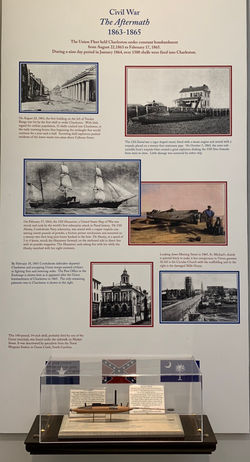 | 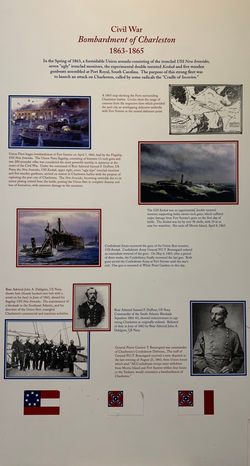 |  |  | 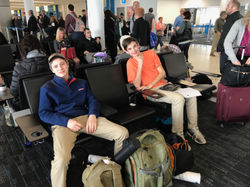 |
|---|---|---|---|---|
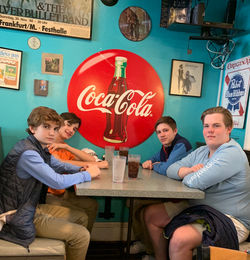 | 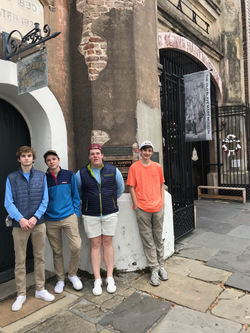 | 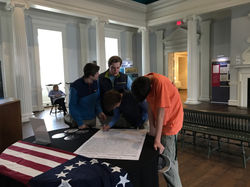 | 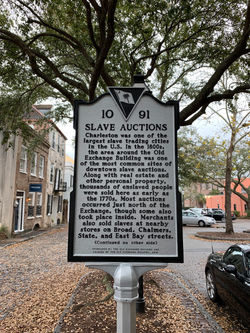 |
Fort Moultrie
In December 1860 South Carolina seceded from the Union, and the Federal garrison abandoned Fort Moultrie for the stronger Sumter. Three and a half months later, Confederate troops shelled Fort Sumter into submission, plunging the nation into civil war. In August 1863, Federal shore batteries on Morris Island began an 18-month bombardment of Fort Sumter, yet Charleston's defenses held. When the Confederate army evacuated the city in February 1865, Fort Sumter was little more than a pile of rubble and Fort Moultrie lay hidden under the band of sand that protected its walls from Federal shells. The new rifled cannon used during the Civil War had demolished the brick-walled fortifications.

Fort Sumter is an island fortification located in Charleston Harbor, South Carolina. Originally constructed in 1829 as a coastal garrison, Fort Sumter is most famous for being the site of the first shots of the Civil War (1861-65). U.S. Major Robert Anderson occupied the unfinished fort in December 1860 following South Carolina’s secession from the Union, initiating a standoff with the state’s militia forces. When President Abraham Lincoln announced plans to resupply the fort, Confederate General P.G.T. Beauregard bombarded Fort Sumter on April 12, 1861. After a 34-hour exchange of artillery fire, Anderson and 86 soldiers surrendered the fort on April 13. Confederate troops then occupied Fort Sumter for nearly four years, resisting several bombardments by Union forces before abandoning the garrison prior to William T. Sherman’s capture of Charleston in February 1865.
Fort Sumter

The City Market
The City Market is a historic market in downtown Charleston. Initially known as the Centre Market, Charleston's City Market was developed as a replacement for the city's Beef Market building, which burned in 1796. Throughout the 19th century, the market provided a convenient place for area farms and plantations to sell beef and produce, and also acted as a place for locals to gather and socialize. Today, the City Market's vendors sell souvenirs and other items.



Boon Hall Plantation
Boone Hall Plantation is one of America's oldest working plantations, continually growing crops for over 320 years.
The Boone Hall Plantation was founded in 1681 by Englishman Major John Boone. Boone came to Charleston to start a plantation and home on the banks of the Wampacheone creek. One of the oldest working farms today. Once known for cotton and pecans, and are still actively producing strawberries, tomatoes, peaches, and a variety of other products.


Fishing Mount Pleasant Pier
John caught a nice Red Drum

Wild Blue Ropes Adventure Park

Charleston Tea Plantation
We went to the Charleston tea plantation. It is the only tea plantation in the United States. The plantation is 127 acres of land for tea making. An interesting thing that we learned is that tea plants don’t like wet soil. They keep the soil dry by putting ditches next to the fields for good draining. The soil is also mostly sand so the water gets absorb very easily.



Old Fort Jackson
We started are day by going to Old Fort Jackson on Savannah river. We learned about how the soldiers lived in the fort. We learned about their clothing and how they only got two shirts and two pairs of underwear. We also learned how they communicated back then using a series of flag movements that corresponded to different letters to spell out words. We then learned about the medicine that the soldiers would use to get rid and/or prevent disease such as malaria. One of the coolest parts of the fort was when we got to see the guide fire the cannon.


A Turning Point in Military History
Fort Pulaski
For much of the 19th century, masonry fortifications were the United States’ main defense against overseas enemies. However, during the Civil War, new technology proved its superiority to these forts. The Union army used rifled cannon and compelled the Confederate garrison inside Fort Pulaski to surrender. The siege was a landmark experiment in the history of military science and invention.

